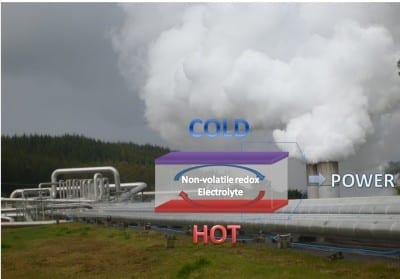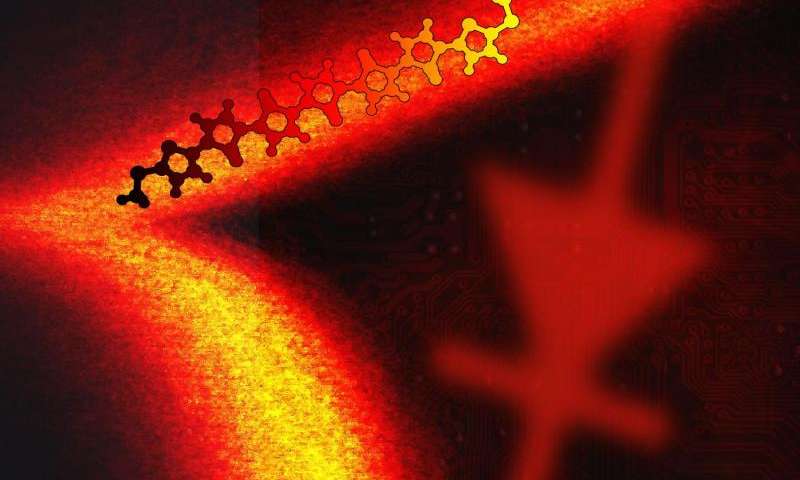
A sprinkling of graphene may conjure a long-sought material into existence
ANY sufficiently advanced technology, as Arthur C. Clarke once observed, is indistinguishable from magic. And one that seems routinely to be ascribed magical properties is graphene. It has been proposed for the manufacture of transistors and light bulbs, as a replacement for bone and a way of delivering drugs, for storing power and for transmitting it, and for lubricating things and waterproofing them. Its latest suggested role, though, is to help turn heat directly into electricity.
The Seebeck effect, first seen in 1821 by a German physicist of that name, is a property of some materials whereby heating part of an object made of that material drives electrons from the hot part to the cold part, creating a current. Generating electricity from heat in this way will never substitute for creating it in a power station specially designed for the purpose but it might, some believe, permit the exploitation of heat that would otherwise go to waste—that produced by car engines, for example; or, indeed, by the power station itself.
The problem is that materials which exhibit a strong enough Seebeck effect to be potentially useful do so only in narrow temperature ranges. One promising candidate is strontium titanium oxide—but it exhibits the effect only when it is heated to between 700° and 750°C. However, two materials scientists, Robert Freer and Ian Kinloch, who work at Manchester University, in Britain, suspected they might be able to extend that range by adding graphene—which, not coincidentally, was discovered at Manchester in 2003. As they report in Applied Materials and Interfaces, they think they have succeeded.
Read more: Generating power from waste heat: Hot stuff
The Latest on: Generating power from waste heat
[google_news title=”” keyword=”Generating power from waste heat” num_posts=”10″ blurb_length=”0″ show_thumb=”left”]
via Google News
The Latest on: Generating power from waste heat
- Researchers demonstrate enhanced radiative heat transfer for nanodeviceson May 9, 2024 at 8:01 am
Researchers from Japan have been working hard to keep their cool—or at least—keep their nanodevices from overheating. By adding a tiny coating of silicon dioxide to micro-sized silicon structures, ...
- Optimization for the trigeneration of industrial wasteon April 19, 2024 at 4:59 pm
Many corporations are moving toward sustainable operations for their processes. One alternative pathway to reduce fossil fuels consumption in a processing plant is through harvesting waste heat from ...
- Combined Heat and Power Market worth $39.2 billion by 2029 - Exclusive Report by MarketsandMarkets™on April 17, 2024 at 3:00 am
The demand for combined heat and power (CHP) is growing due to its efficiency in generating electricity and capturing waste heat for heating or cooling purposes, reducing energy costs and emissions.
- Future of Hydronics: Waste Heat Recoveryon April 11, 2024 at 5:00 pm
RESIDENTIAL WASTE HEAT recovery holds one of the greatest potentials in the effort to reduce energy consumption. Properly applied, it can reduce the thermal energy used for generating hot ... Yes, ...
- Farm uses electricity generated from sugar wasteon April 5, 2024 at 3:33 am
A farm in Czech Republic is showing how valuable food crops can be grown using heat and electricity that are generated using biogas produced from agricultural waste. The farm at Suchohrdly ...
- This Tire Transforms Heat into Poweron January 17, 2024 at 9:10 am
This innovative tire, although presented at the 85th Geneva International Motor Show in 2015, is designed to generate ... heat into electricity, addressing the inefficiency of cars that typically ...
- How is electricity generated?on September 14, 2021 at 2:32 pm
gases from our waste and even the energy stored inside atoms can all be used to generate electricity. We don’t get electricity directly from these sources. There is a process between capturing ...
- Power Generation Systems Informationon February 11, 2018 at 6:09 am
Electric power is currently the most efficient way to convert potential energy to working energy and move that working energy to where it is needed. Extensive energy transport systems are scattered ...
- Recycling Wasted Heat and Power Could Clear the Airon October 24, 2012 at 7:50 am
Increasing industrial energy efficiencies could generate $200 billion ... void now exists to recapture waste heat and to apply it to create electricity. Proponents of the concept say that the ...
via Bing News










